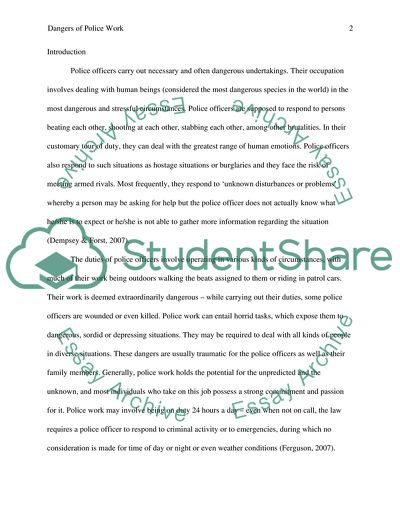Cite this document
(The Dangers of Police Work Essay Example | Topics and Well Written Essays - 1883 words, n.d.)
The Dangers of Police Work Essay Example | Topics and Well Written Essays - 1883 words. Retrieved from https://studentshare.org/law/1588368-the-dangers-of-police-work
The Dangers of Police Work Essay Example | Topics and Well Written Essays - 1883 words. Retrieved from https://studentshare.org/law/1588368-the-dangers-of-police-work
(The Dangers of Police Work Essay Example | Topics and Well Written Essays - 1883 Words)
The Dangers of Police Work Essay Example | Topics and Well Written Essays - 1883 Words. https://studentshare.org/law/1588368-the-dangers-of-police-work.
The Dangers of Police Work Essay Example | Topics and Well Written Essays - 1883 Words. https://studentshare.org/law/1588368-the-dangers-of-police-work.
“The Dangers of Police Work Essay Example | Topics and Well Written Essays - 1883 Words”, n.d. https://studentshare.org/law/1588368-the-dangers-of-police-work.


